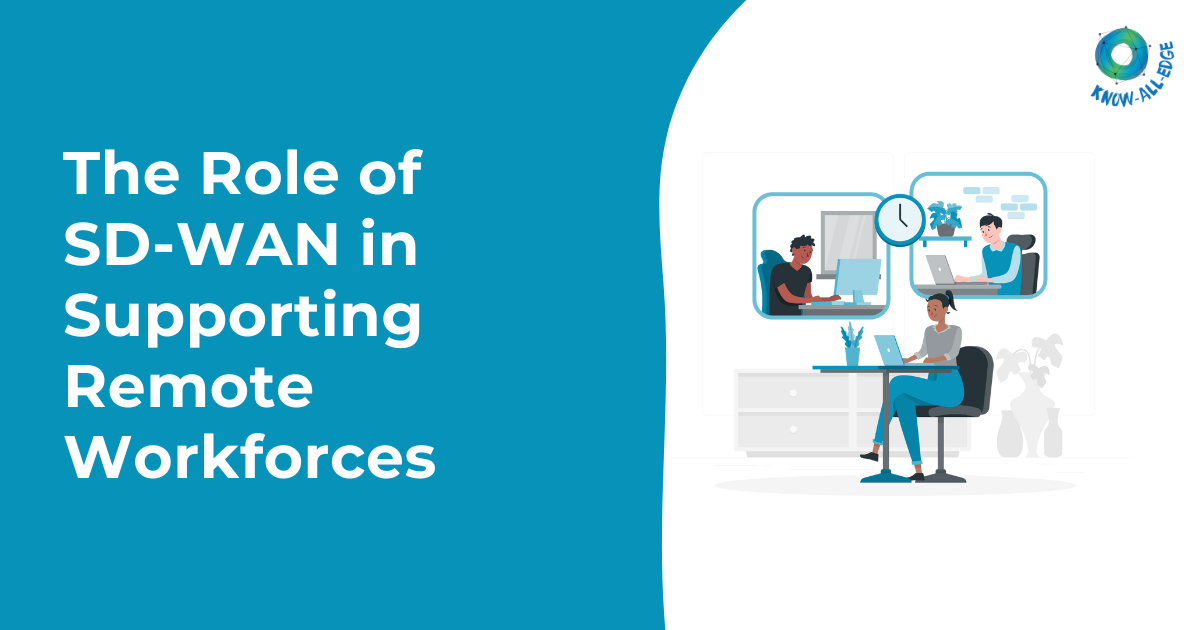The Role of SD-WAN in Supporting Remote Workforces

2 Minutes 2 Seconds | 135 views
Listen This Blog Now!
Table Of Content
- Introduction
- What is SD-WAN?
- How SD-WAN supports remote workforces?
- Secure connections
- Optimize bandwidth
- Centralized management
- Cost-effective
- Flexibility
- Conclusion
Listen This Blog Now!
Table Of Content
- Introduction
- What is SD-WAN?
- How SD-WAN supports remote workforces?
- Secure connections
- Optimize bandwidth
- Centralized management
- Cost-effective
- Flexibility
- Conclusion
Introduction
The past few years have seen an unprecedented shift in the way businesses operate. Remote workforces have become more common, and with the recent COVID-19 pandemic, it has become even more vital to support a distributed workforce. This shift has brought with it new challenges for businesses, including the need to ensure that their networks can support remote workers. This is where SD-WAN comes in. In this blog post, we will explore the role of SD-WAN in supporting remote workforces.
What is SD-WAN?
SD-WAN, or Software-Defined Wide Area Network, is a technology that allows businesses to connect remote workers and branch offices to their network securely. SD-WAN works by using software to manage the traffic that flows over the network, allowing businesses to optimize their bandwidth and prioritize traffic based on the needs of the organization.
How SD-WAN supports remote workforces?
Secure connections: One of the main challenges of supporting remote workforces is ensuring that the network connections are secure. SD-WAN provides secure connections by encrypting the traffic that flows over the network. This ensures that remote workers can access the company's network and data without the risk of a security breach.
Optimize bandwidth: Remote workers rely on their internet connection to access the company's network and applications. SD-WAN can optimize bandwidth by ensuring that the most critical applications have priority over less important traffic. This ensures that remote workers can access the applications and data they need without experiencing slow network speeds.
Centralized management: With a distributed workforce, it can be challenging to manage the network and ensure that everything is running smoothly. SD-WAN provides centralized management, allowing businesses to manage their network from a single location. This makes it easier to manage remote workers, troubleshoot issues, and ensure that the network is running smoothly.
Cost-effective: Traditional WAN solutions can be expensive, particularly for businesses with remote workers. SD-WAN is a cost-effective solution that can reduce the cost of network infrastructure, reduce the need for hardware, and reduce ongoing maintenance costs.
Flexibility: SD-WAN is a flexible solution that can be adapted to meet the needs of the business. With SD-WAN, businesses can adjust their network infrastructure to support changes in the workforce, such as an increase in remote workers or the need to open new branch offices.
Conclusion
The shift towards remote workforces has brought new challenges for businesses, particularly when it comes to network infrastructure. SD-WAN provides a secure, flexible, and cost-effective solution that can help businesses support remote workers. By optimizing bandwidth, providing centralized management, and ensuring secure connections, SD-WAN can help businesses improve productivity and streamline their operations. As remote workforces become more common, SD-WAN is set to become an essential tool for businesses that want to remain competitive in the digital age.
Search Know All Edge